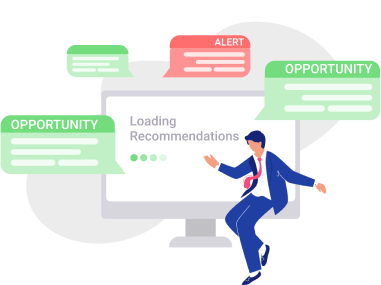Best Practices for Managing Call-Only Campaigns
Today, smartphones are the number one quick and convenient means of communication. To catch up with all this smartphone thing, Google offers businesses to take advantage of call-only ads. In many cases, they are able to drive whopping amount of phone calls to your business. Keep reading and you’ll find out in which industries they work best and what key advantages they offer. We’ll also walk you through the process of setting up a call-only campaign and share the best practices to leverage call-only ads.
What Are Call-Only Ads and Where They Work Best
To start off, let’s clear up what call-only ads are. Google call-only ads can appear only on mobile devices that can make phone calls. They look a bit different from your regular text ads.
The main feature of call-only ads is that they contain your business phone number. Besides the number, they include the name of your business, a URL, and a short description. Originally, the URL was inactive. However, not that long ago, Google added a button with a link to the website to call-only ads, so the users now have two options. They can either click on the headline of the ad to initiate a phone call or visit your website. Let’s cut to the chase and have a look at this call-only ad example:
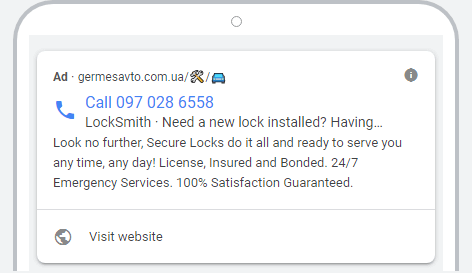
Call-only ads are the best option when your customers need to contact your local business fast and easily. You’ll love them if you are
- a restaurant or a pizzeria
- a shop offering a small number of products
- a towing service
- a car service
- a legal organization
- an office equipment service
Let’s take a look at a case from our experience at RecommendMe. With a call-only ad campaign, a door lock repair service received 150 phone calls during a month. By contrast, they got only 15 calls from other search ad sources.
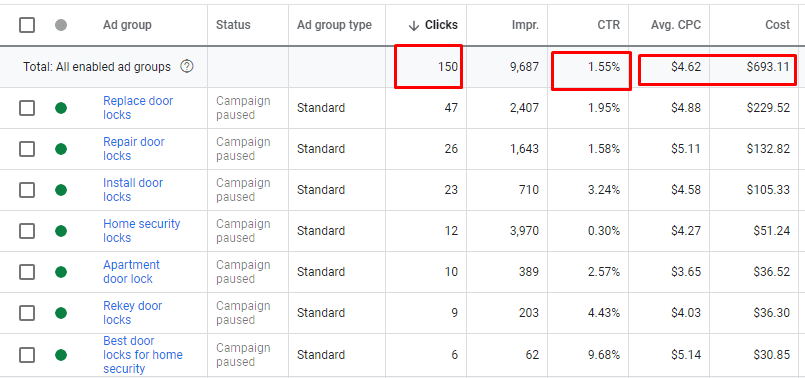
Still, call-only ads can fail to meet your expectations. One of the negative cases concerns a plumbing service. People would google this kind of service in an emergency and make an immediate phone call. Turned out that most users preferred visiting the website first and then requesting a callback.
It all comes down to this: you should test Google call-only ads performance to know if they work effectively for your business. Anyway, we’ve got a tip that will let you make a forecast relying on statistical data rather than just assumptions. Want to see how it works right now? Then let’s go.
How to make a forecast for a call-only campaign
To be able to make a forecast, you need to be running a search campaign that has a call extension. You can use the data of that campaign to approximately figure out the efficiency of Google call-only ads. First, find the number of users who clicked on the ad, including those who clicked on the call extension. Now, switch to a device type to know how many users clicked on the ad from their smartphones.
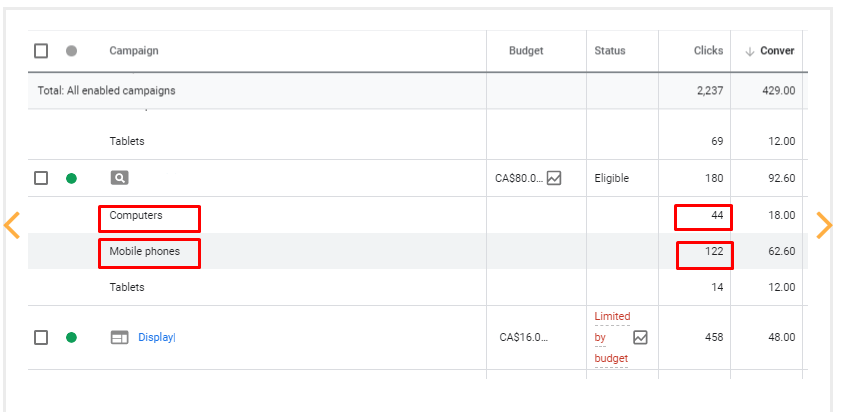
These figures will help you find out how many users make calls without visiting your website.
Benefits of Call-Only Ad Campaigns
If you focus on call leads but aren’t running call-only ads, you’re missing out on a huge opportunity. What makes them so special? Here are their main benefits we’d like to highlight.
They offer quick solutions to your customers
The most remarkable thing about the call-only ads is that they are the fastest way your customer can get to you. Just one click - and here you are! Google call-only ads save your customers’ time and are super helpful when someone needs you in an emergency.
They attract more interested audiences
Needless to say that when someone directly calls the business, they are more likely to convert. Indeed, while huge traffic to your website can include people who just investigate your products or services, phone calls usually mean more serious intentions.
They are easy to use
Call-only ads help your customers contact you with minimal effort. The users don’t need to copy or memorize your phone number, which is quite convenient in the fast-paced modern life.
They generate conversions
Since call-only ads are likely to drive more relevant traffic, they attract users who will probably become your customers. People mostly call when they are genuinely interested, right?
They give valuable clues on further optimization
With call-only ads, you’re going to get super valuable information for your business. It includes the days of the week and times when you receive most calls, the demographics data, and, finally, locations from where people call you most often.
How to Launch a Call-Only Campaign
In this section, we’ll explain to you how to make a call-only campaign work. It’s easier than you think, so let’s get down to the business.
Set up the campaign
To start with, go to the Campaigns tab in your Google Ads account and push the “+” button. You need to select the Search campaign type, as it’s the single option that allows call-only ads. Depending on your goal, go for “Sales” or “Leads”, or you can skip this step and choose to create a call-only campaign with no specific goal.
Next, opt for “Phone calls” as the way of achieving your goal, and enter your phone number.
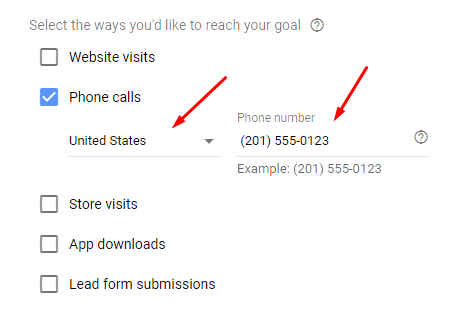
Don’t forget to give your new campaign a name and, finally, adjust location targeting and bidding. Also, remember to switch off “Ad Display Network.”
Beyond that, don’t forget to adjust some important settings: ad scheduling and rotation, location target types, and URL parameters.
Create your call-only ad group
Now, navigate to Ad Groups and click the “+” button. Type in the name for your group and add the list of keywords. By the way, to make it more convenient for you, Google offers a tool that suggests keywords relevant to your business. Click “Save and Continue” and you’re almost there.
Create the ad
Finally, here’s the most interesting part - let’s learn how to create your call-only ads. To begin with, click “New ad.” Now, you are expected to fill in the following information:
- Give the name to your ad campaign. It won’t appear in the ad.
- Type in the name of your company.
- Select the country and enter the phone number. This number will be dialed when the user clicks on the ad.
- Fill in the description lines. Keep in mind that the second one is optional, but we recommend you taking advantage of both, including a solid CTA.
- Insert your final URL and Verification URL.
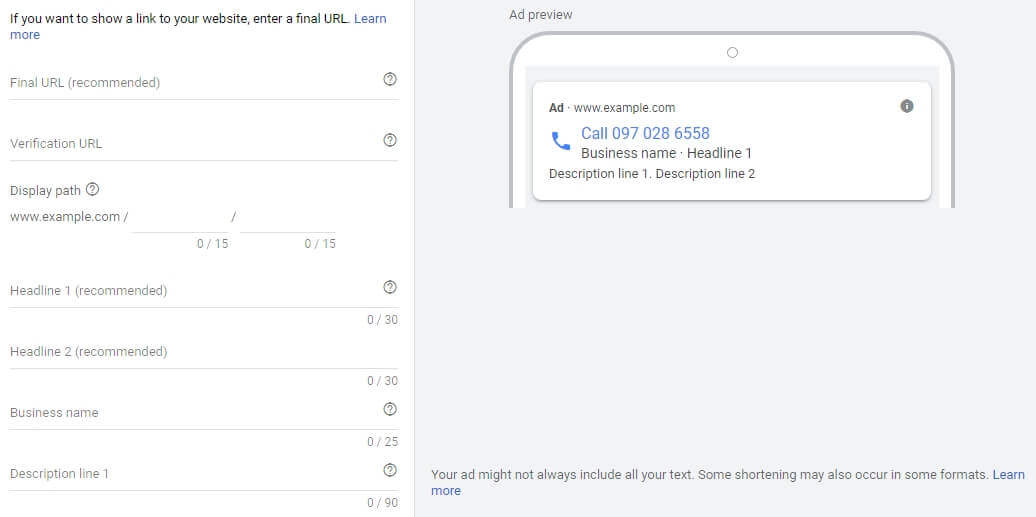
That’s it! After you click Save and Continue, you’ll be able to see your ad preview.
7 Best Practices to Make the Most of Your Call-Only Campaign
To boost your experience of using call-only ads, we’ve prepared seven best practices for running call-only campaigns. We believe that these tips will help you maximize the results of your marketing efforts. Let’s dive in.
1. Adjust your Keyword Strategy
Remember, broad match keywords don’t work well within call-only campaigns. They can drive your ad copy to the audiences that are not actually looking for a company to call. And you don’t want to waste your budget, right? So make sure that you use highly relevant keywords that are most likely to drive phone calls from your target audiences. The best advice here is to use the exact match and phrase match keywords. Also, think of the keywords that reflect a kind of “near me” or “open now” urge.
Setting up a call-only campaign, you should take into account one more important thing. If you copy the keyword list from another campaign, it can result in the internal keyword competition. So how can you avoid it? The trick is to prevent the ads belonging to the older campaign from appearing on mobile devices. In the campaign settings, adjust the bids for mobiles to “-100%.”
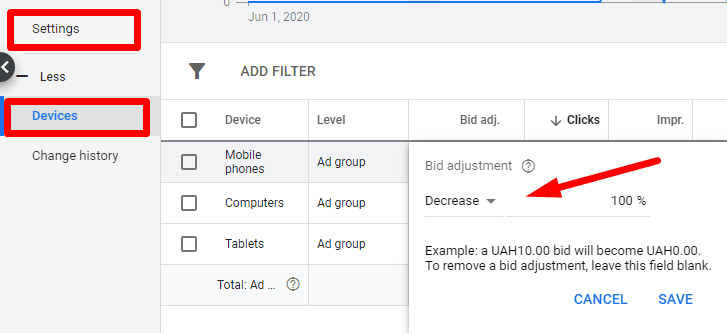
2. Focus on description
Get this: when it comes to writing a description for your ad, you’ve only got two lines that can contain no more than 35 characters each. So do make your description strong and appealing, and make sure it includes a CTA that will encourage people to call you. Also, remember to use a strong keyword in your ad copy.
Anyway, you can try out different description lines and A/B test your call-only ad copies. It will let you figure out which description works best to make people convert.
3. Start with High Bids
When you’re starting your new call-only campaign, we recommend you bidding high right away. Yes, you risk losing your money, but we’ve got two convincing reasons for doing that. First off, high bids will keep your ad copy within the first two top positions, and keep in mind that smartphone users don’t usually scroll down lower. Secondly, you’ll get valuable statistical data that will be useful for further optimization.
4. Track your calls
Needless to say, it’s important to know if the calls you receive from call-only ads result in conversions. To estimate the quality of your call-only campaign, you can take advantage of call tracking. It’s a free Google tool that helps to spot calls that are likely to generate conversions relying upon their length. Call tracking data will help you figure out which keywords, ads, and call-only campaigns work best. This information will be useful for further optimization: you’ll get the clues on how to manage your budget in order to increase your ROI.
Anyway, you can easily track the quality of the received calls by using a separate phone number for your call-only campaign.
5. Schedule your ads
It goes without saying that you need to schedule your call-only ads according to the working hours of your business. It will help you avoid two unpleasant consequences. We mean wasting your budget on ads that appear outside your business hours and ruining your name by not answering the phone.
Also, in case you want to cut your budget, you can run your ads only at times when your company is likely to get most calls. For instance, if you’re a restaurant, you can schedule your ads to be shown right before the mealtimes.
6. Target the right locations
For a local business, it’s important not to mess up targeting the proper locations. Make sure that the users see ads with the phone numbers that belong to the nearest branches or stores. It will substantially reduce your call-only ads cost. A word of advice: if you figure out that the folks from a certain area convert more often, you can turn it into your advantage by increasing the bids for that location.
7. Take advantage of the extensions
Great news: you can make your call-only ads even more effective by using extensions. Google offers three extension options:
Location extensions
If you go for this extension, your ad copy will include your location and its distance to the user. By clicking on the extension, the person will get on your location page with more detailed information.
Structured snippet extensions
This type of extension lets you include additional information into your ad copy. It shows the categories of your products or services within a pattern that includes a header and a shortlist of items.
Callout extensions
A callout extension allows adding 25 characters of text to your ad copy.
All in all, extensions make the ads stand out from other ad copies. Still not convinced? Just have a look at this call-only ad example:
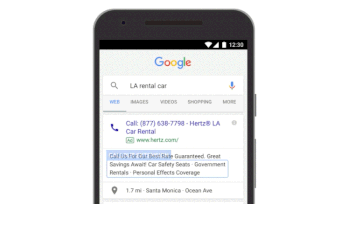
Using extensions is likely to increase CTR as they offer more information about your business. What’s more, you can include all the three extensions into one ad copy, if it’s relevant to your business. Finally, the extensions are free. So why not make them work for you?
Conclusion
To wrap it up, call-only ads don’t work well in each and every case. However, they have enormous potential for some industries. You need to try them out in order to check if they are effective for your business. Take note of our tips on how to improve your Google ads performance and cut your call-only ads cost. Remember to monitor your campaign and you’ll achieve your goals with call-only ads. Anyway, if want to save your time and budget, you can entrust the optimization of your campaigns to an automated assistant. RecommendMe will keep track of your campaigns and inform you when they need changes to generate better results.




